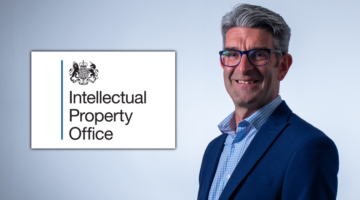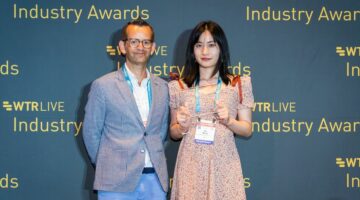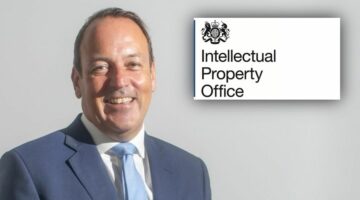
- WTR study finds small proportion of leading women initially pursued IP career
- Interdisciplinary nature of IP attracted many; motivator remains joy in learning new things
- Perceptions towards IP have shifted, creating opportunities for new talent
The number of women in the IP space is less than ideal. A 2023 WIPO report revealed that women accounted for only 16.2% of all inventors listed in Patent Cooperation Treaty applications in 2021, even though almost all applications (96%) had listed at least one man as inventor. Although a higher proportion of women work in trademarks compared to other IP rights, a lower percentage work in trademark litigation than in prosecution, according to a 2020 INTA Women’s LeadershIP Initiative survey.
In honour of International Women’s Day, WTR and sister platform IAM surveyed 26 women in intellectual property, to hear their experiences climbing the ladder of success.
In a four-part series, we hear from the director of the USPTO, the CEO of IPwe and the chief IP counsel at Ocado, to name but a few, as they reveal the hardships they have overcome to rise to the top, their top tips for aspiring leaders, and the changes they would like to see in the industry.
Here, we discover how these women came to find themselves working in intellectual property, and how the field has changed since their first IP role decades ago.
By understanding the various avenues that women have traditionally taken to pursue a career in intellectual property, we can better identify roadblocks, create greater opportunities for others, and ultimately increase the diversity of talent entering the industry.
Seeking an interdisciplinary career
From a pool of 26 respondents, only three said that they had set out to pursue a career in intellectual property. Four set out in a scientific direction – three pursuing science, chemistry or pharmaceuticals, the fourth technology – before making the switch to patents, licensing, or intangibles and IP management.
That fact that intellectual property offers an interdisciplinary career combining science, technology and law was an enticing choice for women who already held a science and law degree.
Liz Eadie started her career at a law firm but found herself wanting to use her science degree more, so she trained to become a patent attorney and now holds the position of executive manager of intellectual property at Commonwealth Scientific and Industrial Research Organisation (CSIRO), an Australian government agency responsible for scientific research.
Kathi Vidal, undersecretary of commerce for intellectual property and director of the USPTO, had also focused “first on my love of science and technology and then my love for the law”, she tells us. After working as an engineer and finishing law school, she ultimately accepted a position with the Federal Circuit, a decision that focused her career on IP law.
“The mix of technology, law, language, logic and interfaces with patent offices and IP firms globally intrigued me,” notes Alida Lundqvist, Ericsson’s patent unit director. She had not planned for a career in intellectual property, but her interest in technology and innovation fueled her curiosity in patents. Becoming a patent attorney trainee and collaborating with inventors to transfer ideas and extract value from innovation into an IP right “sounded exciting”, not to mention it seemed to be a “future proof” career that followed technology trends.
The right place, at the right time
Like Lundqvist, many respondents found themselves presented with the opportunity to embark on an IP career after coming across patent-related job postings. “I was looking for a place to do my PhD and I saw an ad in the newspaper (in 1992) for a trainee patent attorney,” recalls Tessa Malamud-Cohen, director of group patents at Ferring Pharma.
When Motorola was piloting a team in India and recruiting patent engineers, Chandni Agarwal took notice. “Back in 2006, there was very scarce knowledge available in India about patents or patent engineering roles. I just went for the interviews – which were extremely grilling [with] five different attorneys visiting from the United States,” she recalls. Agarwal is now head of portfolio tech advisers and international strategy at Google.
Elsewhere, some law firms nudged women into intellectual property. One of the first internships that Bárbara Castro e Silva, Mercado Libre’s senior IP analyst, completed during law school was at an IP firm. “From then on, I fell in love with [intellectual property] and never left it,” she remembers.
Like Castro e Silva, Maxis IP specialist Kimberly Tey also “fell into IP” after being offered a position to chamber in the IP department. “My first [case] was a patent litigation involving a blockbuster drug and I was truly enamoured by the science behind the invention and the mobilisation of resources to defend the patent,” she reflects.
Career guidance and recruitment
Six respondents said that they had received guidance from another IP professional, inspiring them to give intellectual property a go.
Ocado chief IP counsel Lucy Wojcik “had not considered IP as a profession” until she attended a talk by a patent attorney at university.
Meanwhile, for Maria Mellgren, IP director of Essity, a relative working as a patent attorney had suggested that she apply for an examiner position at the European Patent Office (EPO) because she spoke all three official languages. “I followed his suggestion and sent in an application just to see what would happen,” Mellgren recalls. “About six months later I started as an EPO examiner and since then, I have never looked back.”
“A couple of years in [as an engineer], I was searching for what’s next and someone told me that with my background, I might consider a job as a patent attorney,” says Waymo assistant general counsel Van Nguy. “I had never met a lawyer before, but decided to study for the Law School Admission Test (LSAT) just to see what would happen and ended up applying to law school.”
Others were recruited. “One day, I ran into the manager of the UK Standard team in a hallway. At that time, I was in the architecture team in Motorola Mobility. He told me that he had transferred to the US site to expand the patent asset management team and asked me if I would like join,” recalls Mang Zhu, vice president and head of IP at Interdigital.
Anne McAleer, head of intellectual property at Paragraf, has a similar story. When returning from maternity leave and seeking a part-time role that required less travel, she spoke to an in-house lawyer, who suggested that McAleer manage his company’s patents because no one was actively doing it. When he confirmed that it could be a part-time role, she “said yes straight away for that single reason, without understanding what the role entailed”, she admits.
IP in the 1990s-2000s
Many of our respondents began their IP career more than 10 years ago. To them, the IP world has changed a lot. “When I started, there was no internet yet. To review patents, they had to be ordered and would arrive in the post,” Malamud-Cohen reflects.
Most businesses did not value their IP assets. “Intellectual property was not considered a business function, but a necessary evil that business folks did not understand nor want to understand or incorporate into the business processes,” notes Suzanne Harrison, founder of Percipience LLC. “There was no understanding of intellectual property other than as a legal asset that ‘the lawyers managed’, as an artifact of R&D or as a cost centre.”
Leaders at Vidal’s school, the University of Pennsylvania Carey Law School, had even told her that “intellectual property was more of a vocation” and that she “should aspire to more lofty pursuits, such as constitutional law” after graduating in 1996.
A different IP world now
Perceptions towards intellectual property have since shifted. It is being seen as “both a legal and a business asset”, Harrison notes, “and many companies actively align their IP strategy with the corporate strategy for optimal results”. Companies are being more sophisticated, strategic and targeted in their IP protection, agrees Tey.
Awareness and understanding of intellectual property at a management level have “markedly improved”, adds Anna Olsen, global director of intellectual property at Treasury Wine Estates. This leads to buy-in to address issues in proactive and efficient ways, she says.
“Today, CEOs are working intellectual property into their strategic plans and discussing it on main stages, while the covers of major publications are plastered with IP news,” Vidal observes.
This growing recognition has had a knock-on effect on the industry and the people working in the profession. IP work has become “decentralised”, notes Tey. “Intellectual property [used to be] concentrated in a few large firms. I notice that there are many smaller firms now taking on IP work,” she says.
In-house work is “perceived in a better light” too, Wojcik says. “When I started my career, intellectual property was all about being a partner in a private practice. Now, in-house opportunities are coveted and considered more relevant.”
To meet the increased demand for IP professionals, more schools and colleges now offer graduate and certification programmes in specialised fields of intellectual property, Agarwal notes.
And the world of intellectual property will only continue to change. New challenges are quickly emerging, which need to be identified and addressed immediately. Generative
AI, for example, has copyright implications around the use of pre-training data and protection for generated outputs, as well as patent implications for the subject matter in large-scale model algorithms, to name a few things.
These issues have become common topics of concern across countries, says Lingling Cui, general manager of the patent department at Baidu.
“This not only challenges the traditional concept of patent ownership but also forces legal experts, corporations and policymakers to reconsider and adjust strategies and laws for IP protection,” she continues.
Now that intellectual property, its opportunities and risks are front of mind in a way they never have been before, there is a demand for untapped IP talent. As women in leadership share their experiences entering – and succeeding – in the IP field, younger generations and those currently on a different path may be inspired to pursue a career in this innovative, constantly changing, truly impactful industry.
WTR/IAM Women in IP survey
The responses in this article came from a survey conducted by WTR and sister platform IAM between 26 January and 18 February. The survey was sent to 26 women with significant experience in intellectual property across Europe, the Americas and the Asia-Pacific region. The views, information and opinions expressed are solely those of the respondents and do not necessarily reflect those of their respective organisations.
WTR and IAM would like to thank the following individuals, as well as one anonymous participant, for taking part in this research:
- Chandni Agarwal, head of portfolio tech advisers and international strategy, Google
- Jane Bu, chief licensing officer (former general counsel), Via LA
- Bárbara Castro e Silva, senior IP analyst, Mercado Libre
- Lingling Cui, general manager of patent department, Baidu
- Patricia Dyck, vice president of legal, Takara Bio
- Liz Eadie, executive manager of intellectual property, CSIRO
- Marianne Frydenlund, vice president, Avanci
- Diane Gabl Kratz, director of IP strategy and operations, Dolby Laboratories
- Suzanne Harrison, founder, Percipience LLC
- Alida Lundqvist, patent unit director, Ericsson
- Tessa Malamud-Cohen, director of group patents in the global IP department, Ferring Pharma
- Anne McAleer, head of intellectual property, Paragraf
- Maria Mellgren, IP director, Essity
- Gabriele Mohsler, vice president of patent development, Ericsson
- Ayumi Nishino, lead IP counsel and senior director, NEC
- Van Nguy, assistant general counsel, Waymo
- Anna Olsen, global director of intellectual property, Treasury Wine Estates
- Leann Pinto, CEO, IPwe
- Rosaria Stramandinoli, head of intellectual property, Nutromics
- Kimberly Tey, IP specialist, Maxis
- Kathi Vidal, undersecretary of commerce for intellectual property and director of the USPTO
- Karen Wang, associated general counsel, Western Digital Corporation
- Na Wei, senior licensing director, Xiaomi
- Lucy Wojcik, chief IP counsel, Ocado
- Mang Zhu, vice president and head of intellectual property, Interdigital
- SEO Powered Content & PR Distribution. Get Amplified Today.
- PlatoData.Network Vertical Generative Ai. Empower Yourself. Access Here.
- PlatoAiStream. Web3 Intelligence. Knowledge Amplified. Access Here.
- PlatoESG. Carbon, CleanTech, Energy, Environment, Solar, Waste Management. Access Here.
- PlatoHealth. Biotech and Clinical Trials Intelligence. Access Here.
- Source: https://www.worldtrademarkreview.com/article/how-do-we-get-more-women-ip
- :has
- :is
- :not
- $UP
- 10
- 114
- 16
- 17
- 1996
- 2%
- 2006
- 2020
- 2021
- 26
- a
- About
- accepted
- According
- accounted
- across
- actively
- Ad
- address
- addressed
- Adds
- adjust
- admits
- After
- agency
- ago
- agrees
- algorithms
- align
- All
- almost
- already
- also
- Although
- Americas
- an
- analyst
- and
- anna
- Anonymous
- Another
- Application
- applications
- Apply
- Applying
- architecture
- ARE
- around
- arrive
- article
- AS
- asked
- aspire
- aspiring
- asset
- asset management
- Assets
- Assistant
- associated
- At
- attorney
- attracted
- Australian
- available
- avenues
- away
- back
- background
- Baidu
- BE
- because
- become
- becoming
- been
- before
- began
- behind
- being
- Better
- between
- blockbuster
- business
- business processes
- businesses
- but
- by
- came
- CAN
- Career
- case
- centre
- ceo
- CEOs
- Certification
- challenges
- Chamber
- change
- changed
- Changes
- changing
- chemistry
- chief
- choice
- circuit
- Climbing
- collaborating
- Colleges
- combining
- coming
- Commerce
- Common
- commonwealth
- Companies
- Company’s
- compared
- Completed
- Concentrated
- concept
- Concern
- conducted
- CONFIRMED
- Consider
- considered
- constantly
- continue
- continues
- cooperation
- copyright
- Corporate
- Corporations
- Cost
- could
- counsel
- countries
- Couple
- covers
- coveted
- create
- Creating
- curiosity
- Currently
- data
- day
- decades
- decided
- decision
- defend
- Degree
- Demand
- Department
- Development
- DID
- different
- digital
- direction
- Director
- discover
- discussing
- Diversity
- do
- doing
- drug
- during
- e
- effect
- efficient
- embark
- emerging
- ended
- engineer
- Engineering
- Engineers
- entering
- enticing
- Europe
- European
- Even
- examiner
- example
- executive
- Expand
- experience
- Experiences
- experts
- expressed
- extract
- extremely
- fact
- February
- Federal
- few
- field
- Fields
- Find
- finds
- finishing
- Firm
- firms
- First
- five
- focused
- followed
- following
- For
- Forces
- Former
- found
- founder
- four
- Fourth
- from
- front
- fueled
- function
- General
- generated
- generations
- get
- Give
- Global
- Globally
- Go
- Government
- graduate
- greater
- Group
- Growing
- guidance
- had
- happen
- Have
- he
- head
- hear
- Held
- her
- higher
- his
- holds
- How
- HTTPS
- i
- IAM
- ideal
- ideas
- identified
- identify
- if
- immediately
- impactful
- implications
- in
- incorporate
- Increase
- increased
- india
- individuals
- industrial
- industry
- information
- initially
- Initiative
- Innovation
- innovative
- inspired
- inspiring
- intellectual
- intellectual property
- interest
- interfaces
- International
- Internet
- internships
- Interviews
- into
- Invention
- Inventors
- involving
- IP
- issues
- IT
- ITS
- January
- Job
- join
- joy
- just
- knowledge
- ladder
- language
- Languages
- large
- large-scale
- later
- Law
- law firm
- law firms
- Laws
- lawyer
- Lawyers
- lead
- Leadership
- leading
- Leads
- learning
- least
- Leave
- left
- Legal
- legal experts
- less
- Level
- Licensing
- like
- Listed
- Litigation
- LLC
- lofty
- logic
- looked
- looking
- Lot
- love
- lower
- Main
- major
- Making
- man
- manage
- management
- Management Team
- manager
- many
- maria
- Matter
- Maxis
- May..
- me
- Meet
- mention
- mercado libre
- met
- might
- mind
- mix
- mobility
- model
- months
- more
- Motorola
- my
- name
- Nature
- necessarily
- necessary
- Need
- never
- New
- news
- next
- no
- nor
- Notes
- Notice..
- now
- number
- Observes
- of
- offer
- offered
- Offers
- Office
- Officer
- offices
- official
- on
- ONE
- only
- Operations
- Opinions
- opportunities
- Opportunity
- optimal
- or
- organisation
- Organisations
- Other
- Others
- our
- out
- outputs
- ownership
- part
- participant
- partner
- patent
- Patents
- path
- Pennsylvania
- People
- percentage
- Pharma
- pharmaceuticals
- phd
- piloting
- Pinto
- Place
- planned
- plans
- platform
- plato
- Plato Data Intelligence
- PlatoData
- policymakers
- pool
- portfolio
- position
- Post
- practice
- presented
- president
- private
- Proactive
- processes
- profession
- professional
- professionals
- programmes
- property
- proportion
- PROSECUTION
- protection
- publications
- pursue
- pursuing
- quickly
- R&D
- ran
- reason
- received
- recognition
- reconsider
- recruiting
- reflect
- reflects
- region
- relative
- relevant
- remains
- required
- research
- Resources
- respective
- respondents
- responses
- responsible
- returning
- reveal
- Revealed
- review
- right
- rights
- Rise
- risks
- roadblocks
- Role
- roles
- s
- Said
- saw
- says
- Scarce
- School
- Schools
- Science
- Science and Technology
- scientific
- Scientific Research
- searching
- see
- seeking
- seemed
- seen
- senior
- sent
- Series
- set
- Share
- she
- shifted
- significant
- silva
- similar
- since
- single
- sister
- site
- SIX
- Six months
- small
- smaller
- So
- solely
- some
- Someone
- sophisticated
- Space
- specialised
- specialist
- stages
- standard
- started
- States
- Story
- straight
- Strategic
- strategies
- Strategy
- Study
- subject
- succeeding
- success
- such
- Survey
- surveyed
- Switch
- taken
- taking
- Talent
- Talk
- targeted
- team
- tech
- Technology
- tells
- test
- than
- thank
- that
- The
- the Law
- the UK
- the world
- their
- Them
- themselves
- then
- There.
- These
- they
- things
- this
- those
- though?
- three
- time
- tips
- Title
- to
- told
- too
- took
- top
- Topics
- towards
- trademark
- trademarks
- traditional
- traditionally
- trained
- transfer
- transferred
- travel
- treasury
- Trends
- truly
- Uk
- Ultimately
- understand
- understanding
- unit
- United
- United States
- university
- University of Pennsylvania
- untapped
- until
- us
- use
- used
- USPTO
- value
- various
- very
- via
- vice
- Vice President
- views
- wang
- want
- wanting
- was
- Way..
- waymo
- ways
- we
- WELL
- went
- were
- Western
- Western Digital
- What
- when
- which
- while
- WHO
- will
- WINE
- with
- without
- Women
- Work
- working
- world
- would
- years
- yes
- yet
- Younger
- zephyrnet












